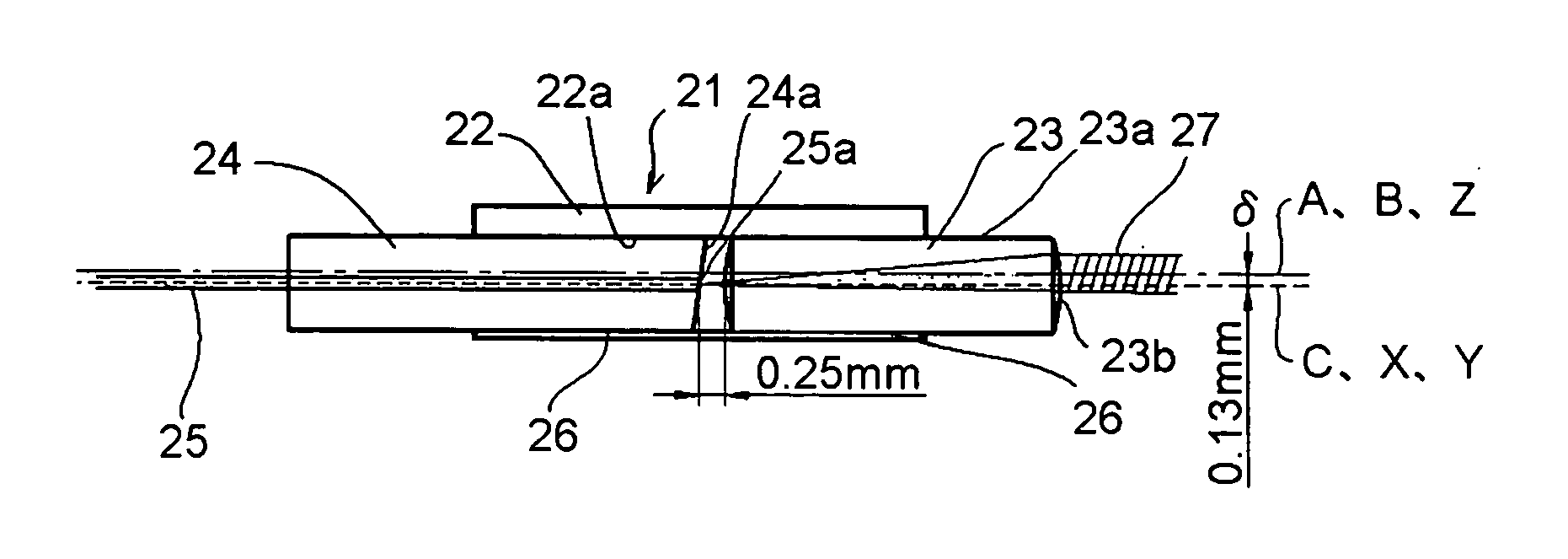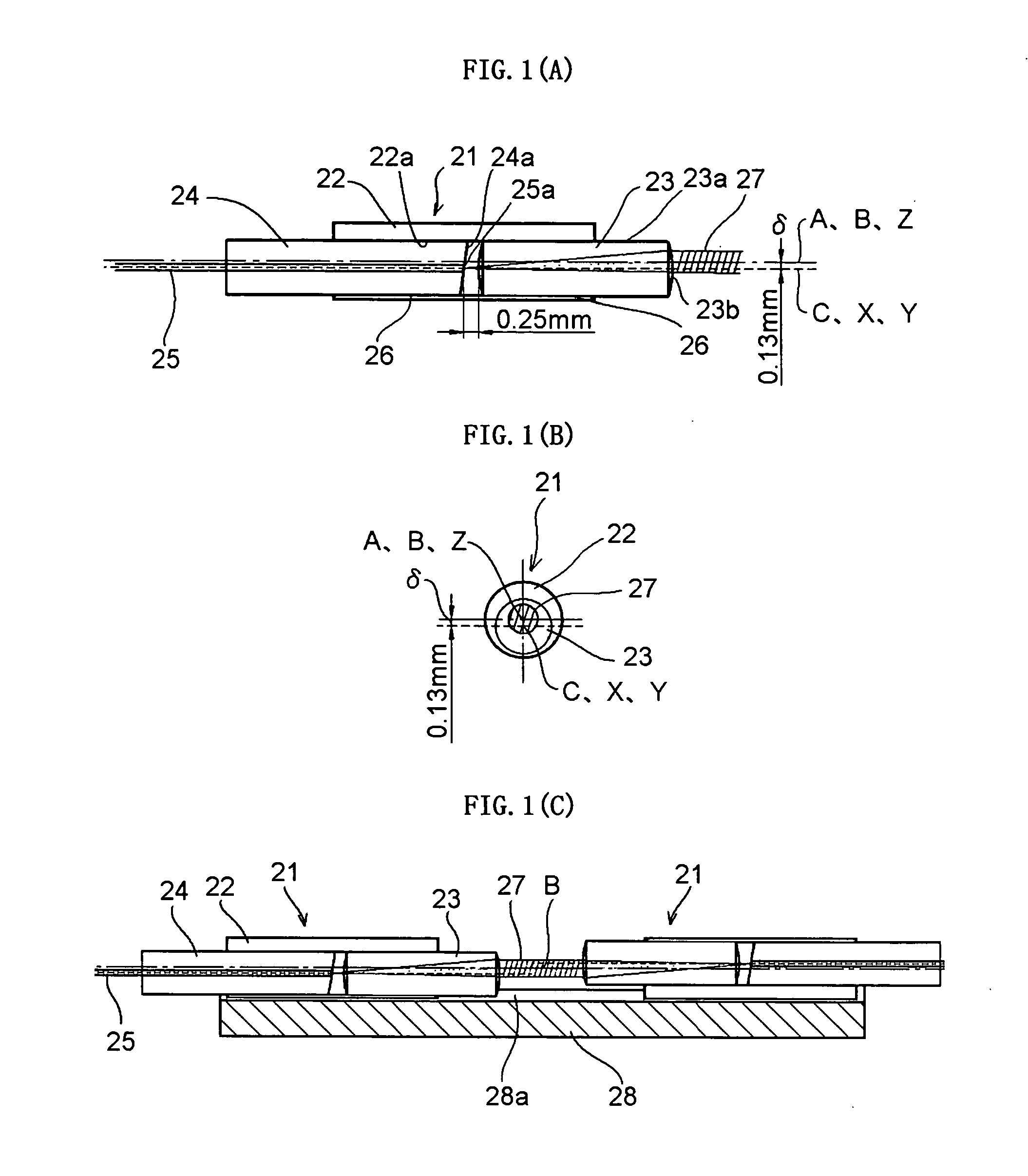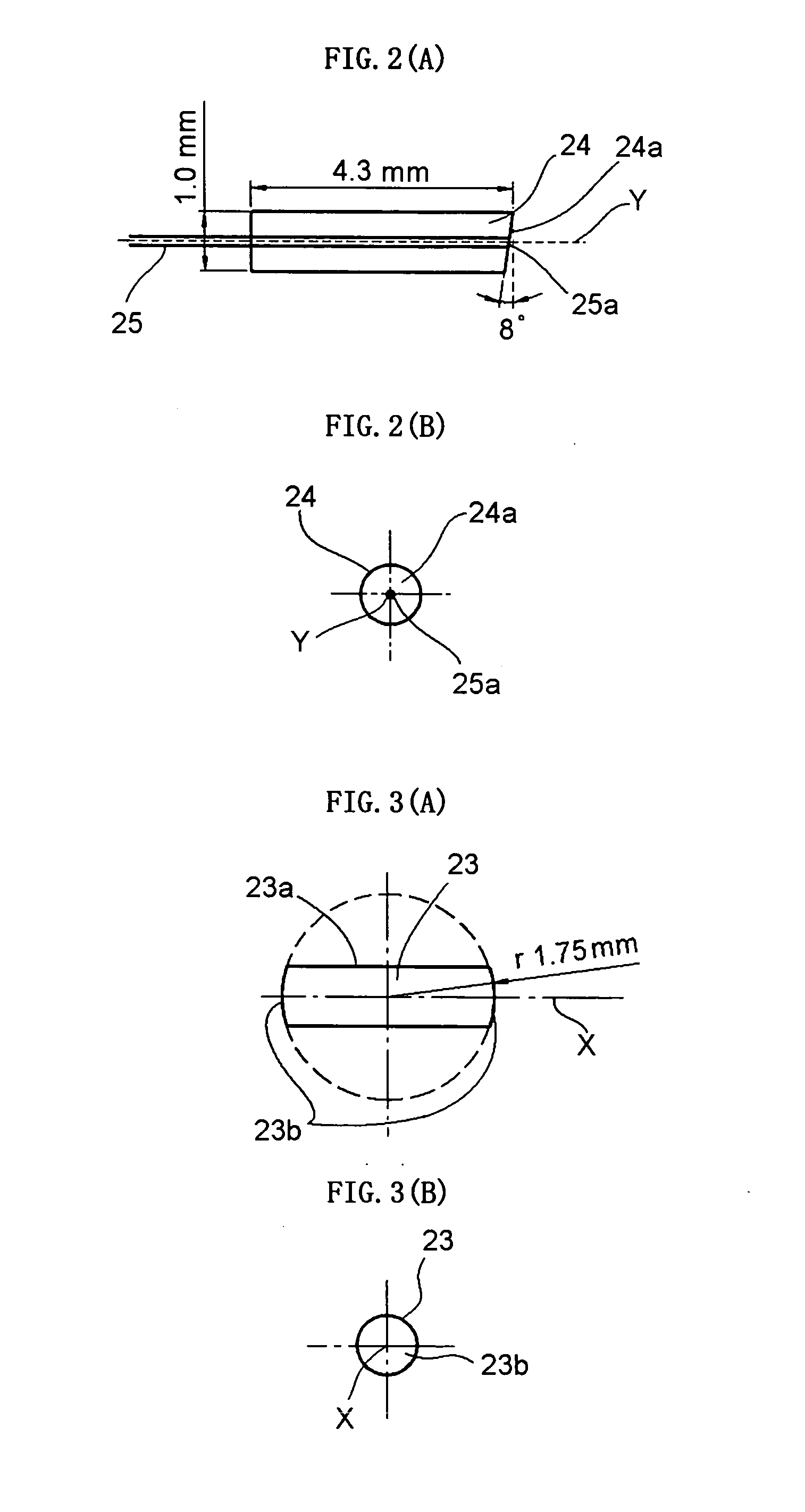Optical collimator
a collimator and optical technology, applied in the field of optical collimators, can solve the problems of inability to obtain stable optical performance, inability to manufacture, and inability to meet the requirements of optical communication devices using single-mode optical fibers or the like, and achieve the production of compact and high-precision metal eccentric sleeves for optical communication devices
- Summary
- Abstract
- Description
- Claims
- Application Information
AI Technical Summary
Benefits of technology
Problems solved by technology
Method used
Image
Examples
first embodiment
[0062]FIG. 1 is an explanatory diagram of an optical collimator 21 that is an example of the present invention. In the drawing, reference numeral 22 denotes a glass-made eccentric tube serving as an eccentric sleeve; 23, a partially spherical lens; 26, an adhesive; 24, a concentrically structured capillary tube; and 25, an optical fiber.
[0063] When the refractive index of the core portion of the optical fiber 25 is referred to as “n1”, the refractive index of the air in an in-the-atmosphere case is referred to as “n2”, the refractive index of the partially spherical lens 23 is referred to as 37 n3”, the radius of curvature of the partially spherical lens 23 is referred to as “r”, and the angled polished angle of an end face 25a of the optical fiber 25 is referred to as “θ”, an amount δ, by which the eccentric sleeve 22 constituting the optical collimator 21 in FIG. 1 is decentered in advance, is expressed as follows. δ=n32(n3-n2)·r·tan[{arcsin(n1n2sin θ)}-θ][Expression 1]
[...
second embodiment
[0078]FIG. 5 is an explanatory diagram of an optical collimator 31 that is another example of the present invention and has a long working distance. In the drawing, reference numeral 32 denotes a glass-made tube serving as an eccentric sleeve; 33, a partially spherical lens; 36, an adhesive; 34, a capillary tube; and 35, an optical fiber. This example is a case where a glass-made tube is used as the eccentric sleeve 32, but another material may be used instead so long as the mutual differences in coefficient of thermal expansion are 50×10−7 / K or less.
[0079] When the refractive index of the core portion of the optical fiber 35 is referred to as “n1”, the refractive index of the air in an in-the-atmosphere case is referred to as “n2”, the refractive index of the partially spherical lens 33 is referred to as “n3”, the radius of curvature of the partially spherical lens 33 is referred to as “r”, and the angled polished angle of the end face 35a of the optical fiber 35 is referred to as...
third embodiment
[0090]FIG. 6 is an explanatory diagram showing an example of an incremental-type rotary encoder 40 that uses the optical collimator 21 according to the present invention. The rotary encoder 40 is one kind of sensors, which detect rotation angles and rotation angular velocities. In the rotary encoder 40, a scale 41 having signal slits 41a is directly attached to a rotation axis as shown in FIG. 6, and a rotation angle is detected with reference to a pulse signal of collimated beam 27 of the optical collimators 21 passing through the signal slits 41a. It is also possible to detect a rotation angular velocity by differentiating the obtained rotation angle with respect to time.
[0091] With the structure shown in FIG. 6, however, although it is possible to detect the rotation angle, it is impossible to detect a rotation direction. Therefore, in many rotary encoders, the rotation direction is detected and a start point is also detected by using multiple optical collimators 21. By using th...
PUM
 Login to View More
Login to View More Abstract
Description
Claims
Application Information
 Login to View More
Login to View More - R&D
- Intellectual Property
- Life Sciences
- Materials
- Tech Scout
- Unparalleled Data Quality
- Higher Quality Content
- 60% Fewer Hallucinations
Browse by: Latest US Patents, China's latest patents, Technical Efficacy Thesaurus, Application Domain, Technology Topic, Popular Technical Reports.
© 2025 PatSnap. All rights reserved.Legal|Privacy policy|Modern Slavery Act Transparency Statement|Sitemap|About US| Contact US: help@patsnap.com



